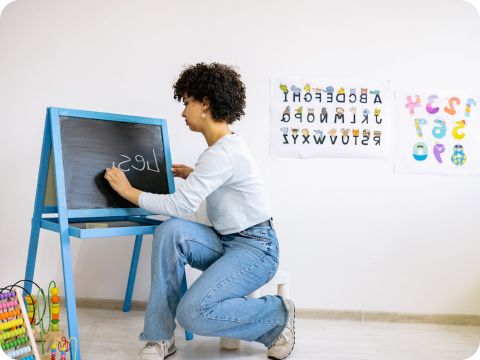The CCBC’s Guide to Getting Published in Canada
What does it take for a creator to get their work published?
There is an assumption that getting a children’s book published is simpler than publishing a piece of fiction for adults. This is false. Any creators who aspire to be children’s authors and/or illustrators must familiarize themselves with the nuances of the field. They also need to develop an appreciation for good children’s literature, and be familiar with both contemporary literature and international classics.
Writers at the beginning of their career may receive numerous rejection letters before being accepted for publication. This is normal. The trick is to keep moving forward.
How should authors approach getting their work published for the first time?
One way for aspiring authors to get their work noticed by publishers is to have a substantial writing portfolio. A portfolio doesn’t have to be limited to children’s fiction—it can also include columns or articles written for children’s magazines.
When submitting a manuscript to a publisher, creators are required to submit a CV that includes all of their writing experience. This is a great opportunity to stand out.
How should illustrators approach getting their work published for the first time?
Illustrators should have a website where they can showcase their artwork. There are also a number of websites where illustrators can create a profile with an online portfolio. The art directors of publishing houses often visit these sites when they’re looking for new talent or a specific style of illustration for a manuscript.
Illustrators should use their online portfolio to showcase their ability to capture different styles and tones. This portfolio should also demonstrate a knowledge of key conventions of illustration.
What makes a great children’s book?
A great children’s book needs a strong sense of story. Its characters should be distinct, and they should grow and change as the plot presents them with clear obstacles. The book’s message and theme should address issues of present-day society with care and sensitivity. Consider what topics are best suited for your voice, and whether you have an informed point-of-view on the issue. The book should be visually appealing, with a unified style and eye-catching illustrations. The visuals and writing should work together to tell a story that will keep young readers engaged.


What are some general tips for getting published?
- We recommend that aspiring creators browse the children’s book section of their local library or bookstore before seeking a publisher. This step will allow you to familiarize yourself with the kinds of books currently on the market, and will give you a sense of which publishers might be interested in your style of writing.
- If you’re an aspiring picture book author, do not submit illustrations with your manuscript unless you’re a trained illustrator. If your manuscript is accepted, the publishing house will match you with an illustrator.
- Enrolling in a creative writing class can also be beneficial. These courses are often available through continuing education departments of your local school board, community colleges, or universities. They give you the opportunity to workshop your stories with peers, and can help you hone your skills.
- Publishing is a collaborative effort, with the publishing team playing a pivotal role in the creation of a book. Creators may feel resistant to the changes proposed by their assigned editor. It’s important to remember that editors are professionals who make their living off the written word—creators need to trust the process. These cycles of edits and revisions exist because it’s in everyone’s best interest to make your book the best it can be.
What are some ways to promote your work after getting published?
- Published authors should have their own website to showcase their work and achievements. The website will often act as a first impression for interested publishers, and should show off your experience and professionalism.
- Authors and illustrators should use their website as an opportunity to showcase their unique identity. Make sure it fully captures your professional experience, notable skillsets, and breadth of work.
- Your website is a great way to connect with your audience and arrange visits to schools and libraries. Make sure your contact information is front and centre on the site, and include clear invitations for educators to set up events. Always keep your information up-to-date!
- We feature Canadian illustrators as part of our Picture Book Gallery—a fundraiser for our Book Week program. This event is the perfect way to find a wider audience, sell your artwork, and raise money for a good cause.
Here are some other resources to help you create and publish children’s books:
The Society of Children's Book Writers and Illustrator (SCBWI) is an international community that welcomes published and unpublished creators. The society is split into regional chapters, which host critique groups, webinars, and other events for writers and illustrators. Visit the SCBWI Canada: East region here and the SCBWI Canada: West region here.
CANSCAIP (Canadian Society of Children's Authors, Illustrators and Performers) is a member-supported community of creators for kids and teens, founded in 1977. Our Members and Friends include authors, illustrators, performers, librarians, educators, publishers, journalists—and everyone who loves kids books. You are welcome to join us!
Bookflap taps the wisdom of writers, illustrators, publishers, editors, readers, and educators, by offering interviews, mini master classes, art demonstrations, podcasts, articles, and more. We bring insight, tips, and experience to telling and selling your stories.